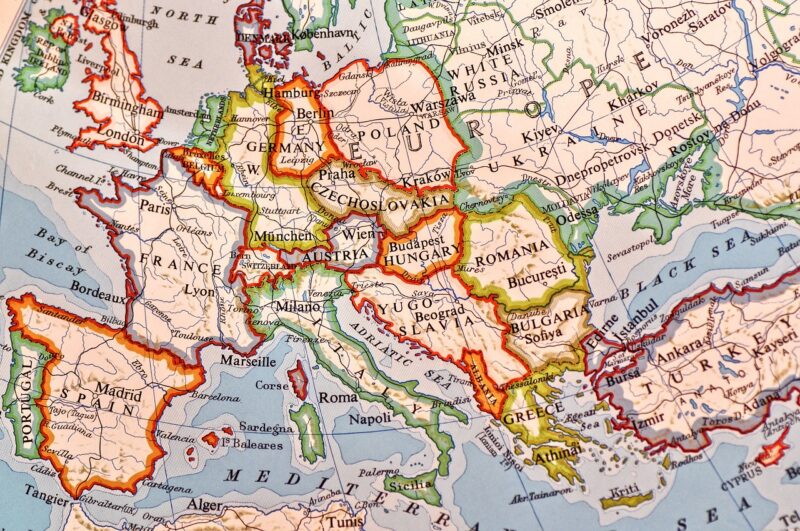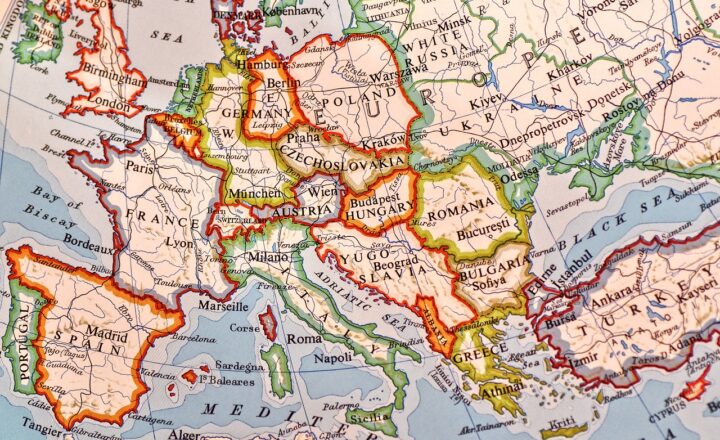Why the World’s Oldest Known Maps Hold Clues About Ancient Trade Routes and Hidden Kingdoms
November 17, 2024

The art of cartography dates back thousands of years, with ancient maps serving as a window into the past, revealing much more than simply locations and distances. Among the most significant treasures of early cartography are the world’s oldest known maps, such as the Babylonia World Map, the Ptolemaic maps, and the Tabula Rogeriana. These maps are not only remarkable art pieces; they contain vital clues about ancient trade routes and hidden kingdoms that shaped the fabric of commerce and civilization.
1. Understanding the Significance of Ancient Maps
Maps from antiquity tell stories of exploration, trade, and the intricate networks that connected civilizations. Ancient cartographers often drew maps by compiling travelers’ accounts, estimated geography, and cultural narratives. In an age of limited tools and knowledge, these maps were remarkably comprehensive, offering insights into the socio-economic landscapes of their times.
What makes these maps especially fascinating is how they reveal the extent of trade routes and interactions between distant civilizations:
- Navigational Aids: Ancient maps served not only as guides but also highlighted trade routes crucial for travel and commerce. They often illustrated paths established through centuries of trade, allowing merchants to navigate vast distances with relative ease.
- Cultural Exchange: Trade routes depicted in these maps were conduits for cultural exchange, where ideas, traditions, and technologies spread among civilizations. The blend created by merchants traveling back and forth contributed to the rich diversity of cultures in ancient times.
- Indicators of Power and Influence: The locations of cities, kingdoms, or trade hubs on ancient maps provide clues about which areas held power at the time. The ability to control trade routes often dictated a kingdom’s wealth and influence, meaning these maps represent political power dynamics as well as geography.
Exploring these features illustrates that these ancient maps are more than just geographical references—they are historical documents illustrating human interaction.
2. Decoding the Oldest Known Maps
The oldest maps known to mankind come from various regions, showcasing the evolution of cartography across different cultures. Among these maps, several stand out due to the information they reveal about trade routes and hidden kingdoms:
2.1 The Babylonian World Map (6th century BCE)
Discovered in Sippar, Iraq, this clay tablet presents a simplified representation of the known world at the time. It includes regions such as Assyria, Babylon, and the mythical land of Dilmun. Despite its simplicity, it provides insight into early trade practices as it outlines key cities and rivers essential for commerce. The river Euphrates is prominently featured, indicating the primary route for trade and transportation in this ancient civilization.
2.2 Ptolemy’s Geography (2nd century CE)
Claudius Ptolemy’s work was revolutionary in its depth and accuracy for its time. His maps included a grid system that later influenced modern mapping. Ptolemy’s representation of trade routes and the organization of regions provides crucial clues about the economic interrelationships between Roman, Arab, and Hellenistic worlds. His emphasis on coordinates allowed merchants and explorers to traverse vast distances with greater precision.
2.3 Tabula Rogeriana (1154 CE)
Commissioned by the Norman King Roger II of Sicily, this map produced by the Arab geographer Muhammad al-Idrisi depicts the known world in exquisite detail. It represents Europe, Asia, and Africa while highlighting trade ports and routes. The Tabula Rogeriana emphasizes the interconnectedness of trade between Muslim and Christian territories, revealing the importance of trade in the Mediterranean and beyond.
3. Ancient Trade Routes Revealed
Mapping the ancient world unveils trade routes that were critical for economic exchange. These routes were not linear; they twisted and turned through deserts, mountains, and forests and connected various cultures and kingdoms:
3.1 The Silk Road
The famed Silk Road was a series of interconnected trade routes stretching across Asia and into Europe. Ancient maps indicate the pathways taken by merchants bringing silk, spices, and other goods, demonstrating the extensive reach of trade networks. Cities like Samarkand and Kashgar emerged as essential trading hubs, fostering cultural and commercial exchanges that enriched various regions.
3.2 The Incense Route
This route connected the Mediterranean with the Arabian Peninsula, facilitating trade in valuable spices and incense. Ancient maps indicate stops along the way—cities that played critical roles in transporting goods from the East to the West. For example, Shabwa in present-day Yemen became a significant trade center where frankincense was harvested and shipped northward.
4. Discovering Hidden Kingdoms and Cultures
The insights derived from these ancient maps often lead historians to rediscover lost civilizations and forgotten kingdoms:
4.1 The Kingdom of Aksum
Maps from the ancient world uncover the existence of Aksum, a powerful trading empire located in present-day Ethiopia and Eritrea. Aksum was a hub for commerce between India and the Roman Empire, dealing in ivory, gold, and spices. The recognition of its importance comes from ancient geographical references, revealing a once-flourishing kingdom whose influence extended far beyond its borders.
4.2 The Muisca Confederation
Cartography has also shed light on South American civilizations. The Muisca Confederation, which occupied present-day Colombia, engaged in extensive trade networks. Maps document their interactions with Spanish explorers, revealing details of their rich culture and commerce, including the fabled El Dorado.
Ancient maps, whether of the Middle East, Africa, or Asia, unveil a vibrant tapestry of interlinked societies and cultures that have shaped our world.
5. The Legacy of Ancient Maps
Understanding ancient maps is crucial not only for historians but also for modern-day cartographers. They serve as a reminder that humanity has been navigating complex networks of trade and communication for millennia. The legacy of these maps lies in their ability to:
- Inspire Modern Cartography: The skill and artistry involved in ancient map-making provided the foundation for today’s geographic practices, inspiring contemporary map-makers to strive for accuracy and creativity.
- Enhance Our Understanding of History: They are vital tools for historians, offering a glimpse into trade, culture, and socio-political landscapes of ancient civilizations.
- Promote Cultural Appreciation: Maps introduce us to lost civilizations, enriching our knowledge of past societies and their contributions to human history.
By studying these treasures, we not only gain insights into the strategies and perceptions of our ancestors but also our shared human legacy in exploration and connection.
Conclusion
The oldest known maps are invaluable artifacts that encapsulate the spirit of exploration and trade in ancient times. They uncover routes and relationships that fostered growth and collaboration among diverse cultures. Through continuous study and appreciation of these notable maps, we deepen our understanding of ancient trade routes and the hidden kingdoms that contributed significantly to the tapestry of human history. The questions they provoke and the discoveries they enable make ancient maps a crucial focal point for both historians and cartographers alike, keeping the stories of our ancestors alive.







